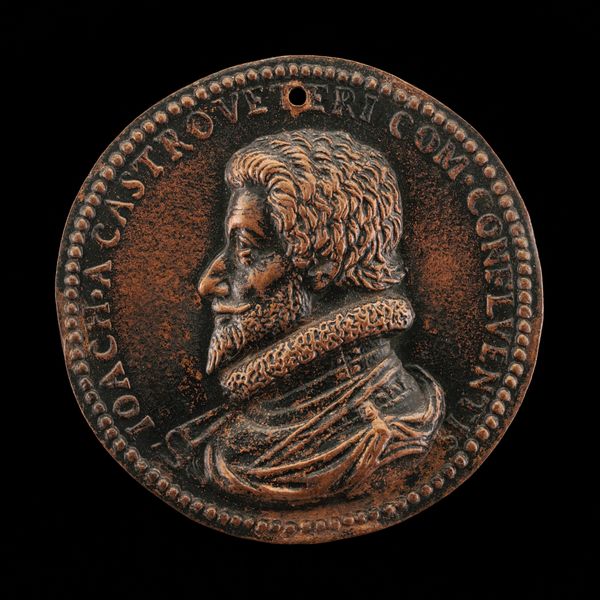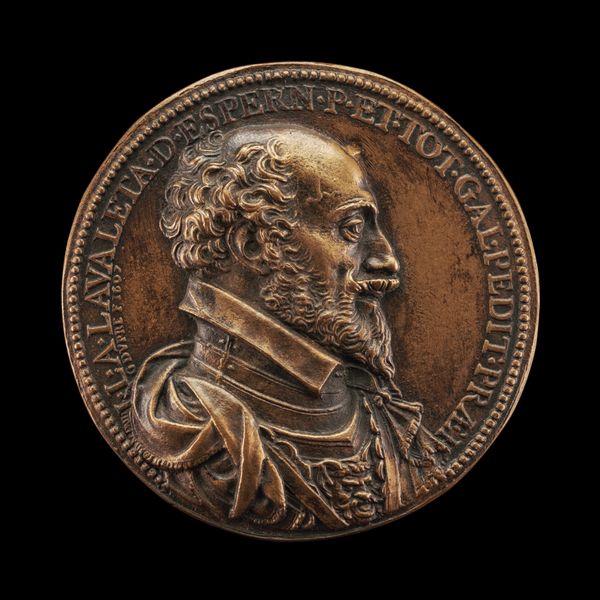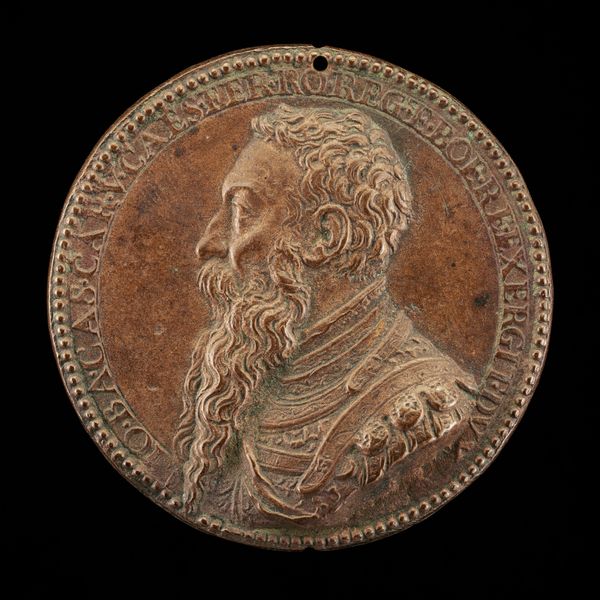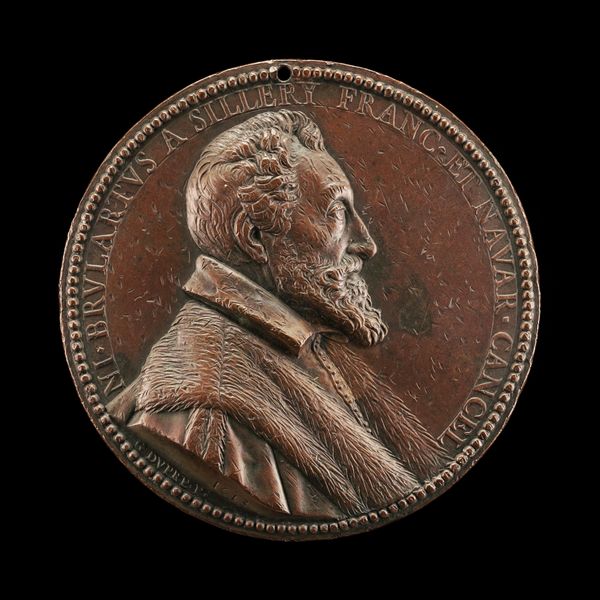
Viglius van Aytta of Zuichem, 1507-1577, Lawyer and Humanist 1556
0:00
0:00
metal, relief, sculpture
#
portrait
#
medal
#
metal
#
sculpture
#
relief
#
11_renaissance
#
sculpture
Dimensions: overall (diameter): 5.42 cm (2 1/8 in.) gross weight: 35.21 gr (0.078 lb.)
Copyright: National Gallery of Art: CC0 1.0
Curator: What a fascinating work. This is Jacques Jonghelinck's "Viglius van Aytta of Zuichem, 1507-1577, Lawyer and Humanist" created in 1556. It’s a medal cast in metal, a relief sculpture to honor the noted jurist. Editor: My immediate reaction is to the crispness of the profile. The line of his nose, the furrows of his brow - there's such a defined visual language at play to denote not just likeness but intellect, even power. The circular form neatly encloses the visual narrative. Curator: Absolutely. Consider Jonghelinck's access to materials. The quality of metal, its source, reflects not just artistic skill, but Viglius’s own social standing and the commission’s importance within the Habsburg Netherlands. And that inscription wrapping the portrait, emphasizing Viglius’ titles, elevates the medal to a potent symbol of authority. Editor: Precisely. And look at how the texture informs the narrative. The slight imperfections on the metal surface contrast beautifully with the meticulously rendered details of his beard and clothing. This creates a visual rhythm—roughness versus refinement. I can almost trace my finger along the contours. Curator: And the labor involved. Think of the mold-making, the casting process. Craftspeople meticulously transforming base metals into something intended to project influence and longevity. Who were those individuals, and what were their conditions? It asks questions about production that a simple glance at the face cannot provide. Editor: Fair point. The formal qualities work so successfully precisely because of those inherent physical properties and its material limitations. The play of light on the surface; the strategic use of depth to create dimension within a flattened form… Jonghelinck's command is undeniable. It guides our eye. Curator: To move past visual appearance alone encourages deeper reflections about not only social structures and individual experiences during the Renaissance, but more broadly about the power that resided within the means of production. The art becomes inextricably bound with societal forces at play. Editor: Yes. Considering the composition and textures in isolation allows us to see beyond simple representation to unlock how visual balance underscores the figure’s character within a certain set of period ideals. Both contribute uniquely to how one approaches a comprehensive reading.
Comments
No comments
Be the first to comment and join the conversation on the ultimate creative platform.













